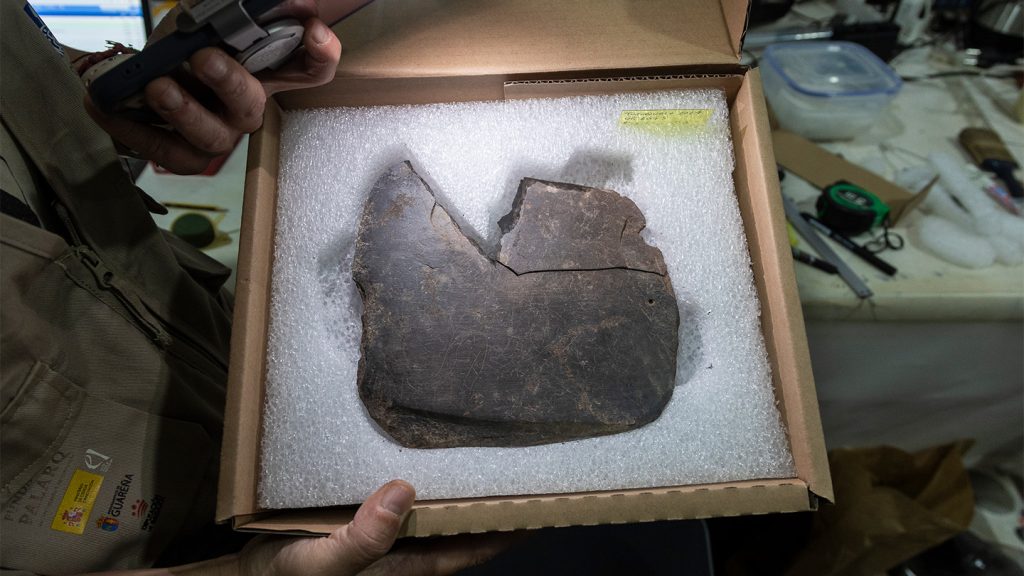A sequence of previously undiscovered letters from an ancient alphabet has recently been found by a software engineer scrolling through social media posts from an archaeological dig in southern Spain. These letters, closely related to the Phoenician alphabet, are believed to shed new light on a prosperous pre-Roman civilization’s writing system. Previously, incomplete or poorly dated samples had been found, but this discovery offers a more complete and well-dated example. The finding was announced by the Spanish National Research Council on June 11.
The site in southern Spain, known as Casas del Turuñuelo, is an archaeological site connected with the civilization of Tartessos dating back to the 5th century B.C. The site features a large temple that has been deliberately burned down and buried as part of a ceremonial ritual, preserving its contents. Recent excavations at the site uncovered a slate rock engraved with various symbols, including warriors and geometric shapes, indicating it was used as a sketching device.
During the excavation, researcher Joan Ferrer i Jané noticed the presence of a Paleohispanic letter, which sparked further investigation into the symbols on the slate. He identified 15 symbols on the slate, with potential for more once special imaging techniques are used. The discovery of these symbols suggests literacy among the inhabitants of El Turuñuelo in the 5th century B.C., providing insights into the writing system used by the Tartessian culture of that time.
Experts believe that studying the layout and variations in the alphabet inscriptions will help trace the linguistic and cultural evolution within the Tartessos culture. It is unclear if the writing system was consistent across the territory of Tartessos or if there were regional variations. This alphabet is derived from the Phoenician alphabet but has unique variations that can reveal how it evolved. The missing piece of the slate slab may provide valuable information as different sounds and symbols were typically placed towards the end of an abecedary.
By collaborating with archaeologists and researchers at El Turuñuelo, Ferrer aims to reexamine all the slate fragments collected during the excavation to potentially find more inscriptions or locate the missing fragment of the alphabet. The hope is that this discovery will lead to the identification of more inscriptions, offering further insights into the writing system and literacy of the Tartessos culture. This finding has opened up new avenues for archaeological research and has the potential to enhance our understanding of this ancient civilization and its communication methods.


